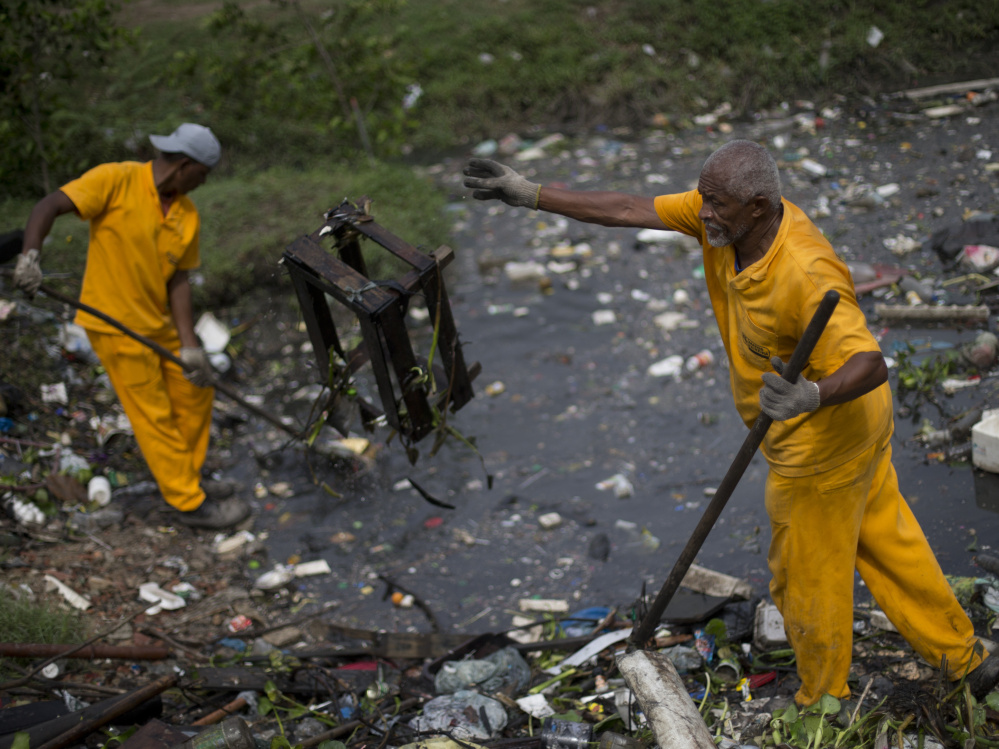RIO DE JANEIRO — In seeking to host the Summer Olympics, Brazil promised “green games for a blue planet.” It pledged to clean up waterways around future Olympic sites, including a lagoon in front of the planned Olympic Park, and to remove 80 percent of the sewage flowing into the bay where most sailing races would be held.
It appears none of these goals will be reached when the Olympics open Aug. 5. Instead of the Green Games, these may be the Filth Olympics.
“When we talk about environmental legacy, we are talking about public health,” said David Zee, an oceanographer who studies Rio’s waters. “In this aspect, Rio is a failure.”
Nobody understands this more than the fishermen who live near the main Olympic Park and athletes’ village, situated on Jacarepaguá Lagoon.
On a recent evening, fisherman José Ferreira paddled out of a black tributary that bubbled with gasses like sulfur and methane and was covered with swathes of Gigoga, an Amazon plant that thrives in filthy water.
Jacarapaguá Lagoon is one of four lakes in an interlinked system connected to the sea. The lagoons and many of the rivers feeding into them are heavily polluted.
Ferreira and the few dozen fishermen living in the area say they can no longer scrape a living from these waters.
“This lagoon is dead. There is nothing left,” said Francisco Costa, 57, president of their association.
The West Rio suburbs, the site of the Olympic Park and Olympic Village, grew up rapidly in recent decades, and the sanitation infrastructure failed to keep pace, said Zee. Instead, communities just dumped sewage into rivers and lagoons.
Complicating the response to the problem, different government entities manage the bodies of water around the city.
Rio state is responsible for most of the city’s sewage and the lagoons. The state-controlled sewage company, CEDAE, said in an email that the situation has improved dramatically from 2007, when it treated none of the sewage in the neighborhoods around these lagoons. Today it handles 90 percent of sewage in the Barra da Tijuca neighborhood and 60 percent of the sewage in Jacarepaguá.
But even that performance is open to question. In April, police took samples from sewage stations and said they were investigating whether the company dumped raw or barely treated sewage into the lagoons and into Guanabara Bay, where sailing races are to be held.
As part of Rio’s Olympic commitments, the city agreed to build five river-treatment units, but only one was completed.
The state government drew up a $194 million plan to dredge the heavily silted lagoons, which might enable more seawater to get in and flush out waste. But the project was held up by requirements for extra environmental studies. Now, the studies are finished, but the state declared a “state of calamity” in its finances.
Send questions/comments to the editors.



Success. Please wait for the page to reload. If the page does not reload within 5 seconds, please refresh the page.
Enter your email and password to access comments.
Hi, to comment on stories you must . This profile is in addition to your subscription and website login.
Already have a commenting profile? .
Invalid username/password.
Please check your email to confirm and complete your registration.
Only subscribers are eligible to post comments. Please subscribe or login first for digital access. Here’s why.
Use the form below to reset your password. When you've submitted your account email, we will send an email with a reset code.